JuliaSim is the next-generation, cloud-based platform for model-based design. Using modern scientific machine learning (SciML) techniques and equation-based digital twin modeling and simulation, JuliaSim can accelerate simulation by up to 500x.
JuliaSim = Science + ML
JuliaSim is machine learning done right for engineers. Mix scientific knowledge of physical and chemical processes with data to build digital twins that predict better from less data.
Precision Modeling With Digital Twins Means Faster Production and Lower Costs
Building precise and accurate models is difficult and labor-intensive with current tools. JuliaSim’s unified modeling frameworks for integrating machine learning with traditional simulation in order to overcome the challenge of building predictive models. Pre-start the modeling process with our built-in libraries, use machine learning to automatically discover higher order physics, swiftly calibrate the digital twin to real-world data, use neural surrogates to accelerate the simulation, and generate highly accurate nonlinear controls for deploying on embeded devices.
Integrate with Existing Tools
Engineers can use their models from existing tools. JuliaSim is compatible with the industry standard interface used across virtually all modeling tools - the Functional Mock-up Interface. Generate a Functional Mock-up Unit (FMU) from your existing modeling tools (such as Simulink or Dymola), import that FMU into JuliaSim, train an accelerated surrogate model, export a new FMU and import that into your FMI-compliant tools. Teams not using FMUs can use function registration to embed calls to Julia, R, and Python models from within model blocks.
Build Models Faster
JuliaSim is built on the ModelingToolkit acausal modeling platform. [This system allows for building complex models with orders of magnitude less code and with more code reuse than causal modeling platforms](link to acausal vs causal video). Further increase this productivity by integrating one of JuliaSim’s pre-made models, which span domains from two-phase flow HVAC simulation to battery packs.
Transform Models to Digital Twins
JuliaSim has all of the tools necessary to integrate data into the predictive modeling process. Nonlinear calibration, integrated automatic differenitation, and optimal design tools allow for fast and accurate parameter tuning. Meanwhile techniques like universal differential equations allow for automating the discovery of missing higher-order physics to extend models in a data-driven way.
Ensure a Robust Deployment
JuliaSim understands that the biggest impediment to deploying nonlinear model-predictive controllers and integrating machine learning models into the field is guarenteeing safety. JuliaSim has tools to tune nonlinear controllers using robust and uncertainty-aware techniques, analyze the uncertainty and errors of neural surrogate models, and quantify the parametric uncertainty of model fits.
Interested in SciML?
Learn about the impact of SciML on industrial engineering, the benefits of a SciML approach to modeling, and the difference between SciML and other machine learning techniques.
Watch Now
JuliaSim is Simple
Using acausal modeling and pre-made models, scientists and engineers can build realistic models in minutes.
JuliaSim is Fast
10x to 1000x faster than other traditional products. Works seamlessly on GPUs.
JuliaSim Integrates Machine Learning
Use SciML methods to automate the discovery of missing physics, accelerate simulation with neural surrogates, and improve processes with deep learned controllers.
JuliaSim is Safe
With an emphasis on uncertainty quantification, numerical stability, and robust controls, JuliaSim is the safe way to bring machine learning into real-world processes.
Advanced Modeling and Simulation With Simple Code
BUILD
MODELS
TUNE
CONTROLLER
SIMULATE
MODEL
EXPORT TO
C-CODE
Auto Crash Simulation
Instron Uses JuliaSim for 500x Faster Design Time, Leading to Faster New Product Design
Case Study
Williams Racing Unlocks SciML using JuliaSim
Teams are continually seeking ways to improve performance on and off the track. One key area of focus is the use of simulation to understand the performance of the car and make strategic decisions during races.
Case Study
Emergency Medical Supplies by Drone
Zipline uses Julia for aircraft simulation to deliver life-saving emergency medical supplies via drone in Africa and worldwide
Case Study
You have data and a model, and you want the two to match. What do you do?
Register for our upcoming webinar "Model Calibration and Parameter Estimation with JuliaSim Model Optimizer" and learn how model optimization can help you.
Watch Now
LEARN MORE ABOUT JULIASIM AND HOW IT IS BEING USED
Modeling and Simulation with JuliaSim
Dr. Chris Rackauckas
WEBINAR
Modeling Battery Lifespan with JuliaSim
Dr. Marc Berliner
WEBINAR
SciML: Scientific Computing + Machine Learning = Industrial Modeling for Engineers
Dr. Chris Rackauckas
WEBINAR
Modeling Tools
Simulate with speed and accuracy
- Efficient: outperforms C and Fortran methods
- Full-featured: use all of the latest techniques
Model symbolically, let the power of Julia simplify, accelerate, and parallelize
- Acausal component-based modeling
- High-Performance: let Julia generate the fastest possible code for the model
Model intuitively, but get the speed, performance, and features of a skilled coder
- Build models graphically, no code required
- Intuitively use all of the features of JuliaSim
Fast chemical reaction modeling, no hassle
- Concise chemical reaction notation
- Generate ODEs, SDEs, and Gillespie jump processes
Model Libraries
Don’t start a model from scratch: build using a common set of components
- Quickly get real-world models running
- Worry about the engineering, not the math
Buildings use 40% of the world’s energy, don’t let it use that much of yours
- Fast and accurate refrigerant property models
- Everything from the ground up
Plug complete models of electrical devices into any physical system
- Industry-standard MOSFET models
- Import Spectre/SPICE netlists and direct schematics
Your domain-specific library
- With additional libraries in progress, reach out to us to discuss what library you might need to take advantage of JuliaSim
Special Solvers
Discontinuity-Aware DAE Solver - Handle phase transitions, contacts, and more with ease
- Accelerate differential equation solves with implicit discontinuities
- Increase the stability and accuracy of difficult simulations
Accelerated Nonlinear Solver - Find your inner zen by reaching equilibrium faster
- Fast, specialized algorithm for solving steady-state equations
- Proprietary algorithmic enhancements for improved performance
Symbolic-Numeric BDF Solver - Faster and more robust stiff ODE and DAE solving
- Integrated ModelingToolkit.jl simplifications for more stability and performance from pure numerical methods
Modules
You bring the data, we give you the physical model
- Quickly generate predictive models from data
- Connect data-generated models to physics
You bring physics, we bring machine learning, for fast simulation
- Accelerate large simulations with machine learning-surrogates
- Connect surrogate models in Modeling Toolkit
Quickly convert models and data into calibrated systems with quantified uncertainties
- Model calibration with automated parallelism and uncertainty quantification
- Model autocomplete by using scientific machine learning (SciML) to discover missing physics
Take control of your hardware, explore your nonlinearities
- Linearized controls analysis
- Construct and calibrate Model-predictive controllers
Learn from your data, let the digital physics evolve
- Real-time model calibration from stream data
- Machine learning in the cloud – adapt over time
Apps
Drop an FMU in the mail, pick it up 1000x faster
- Import FMUs simulations from common tools
- Point and click machine learning returns a 1000x faster simulator
Making everyday engineering simpler
- Point-and-click optimization of PID parameters
- Robust sensitivity analyses included
Point and click digital twin generation, made for the engineer
- Import data from standard file formats
- Use machine learning without the hassle
Ready to see how JuliaSim can accelerate your product development? Speak to a member of our team.
Contact Sales







